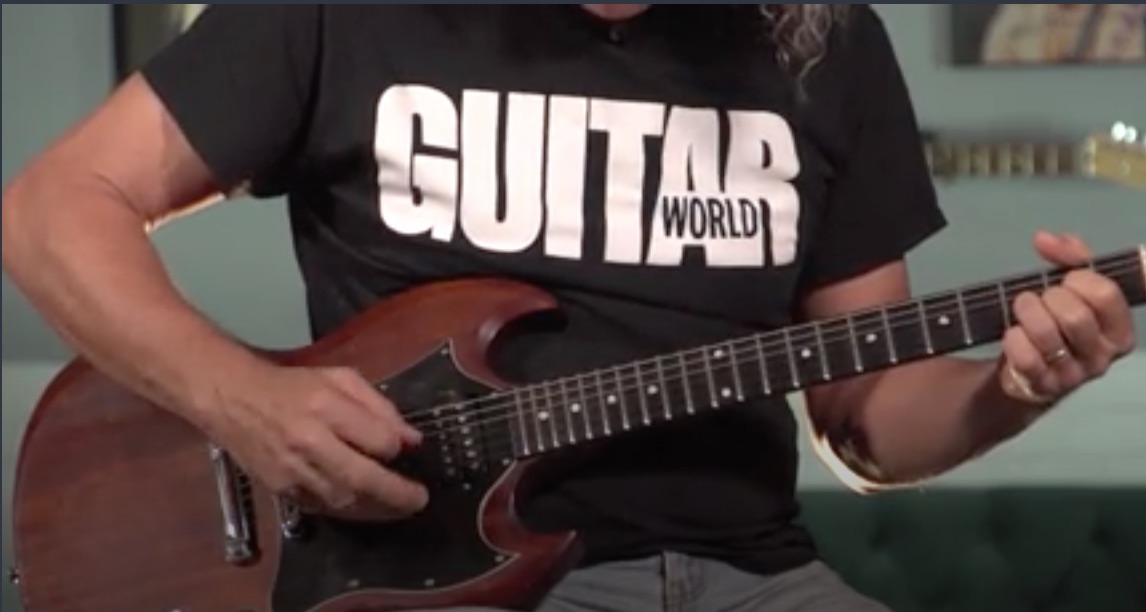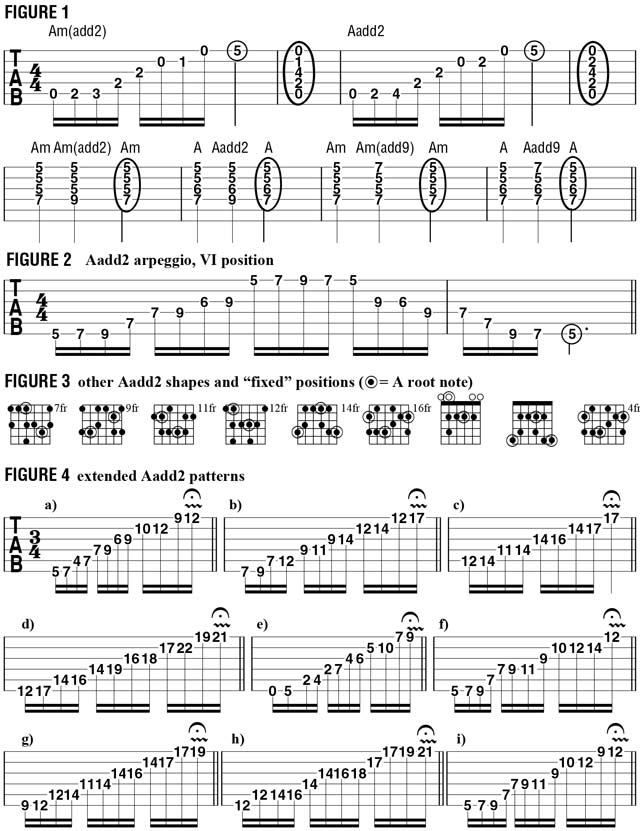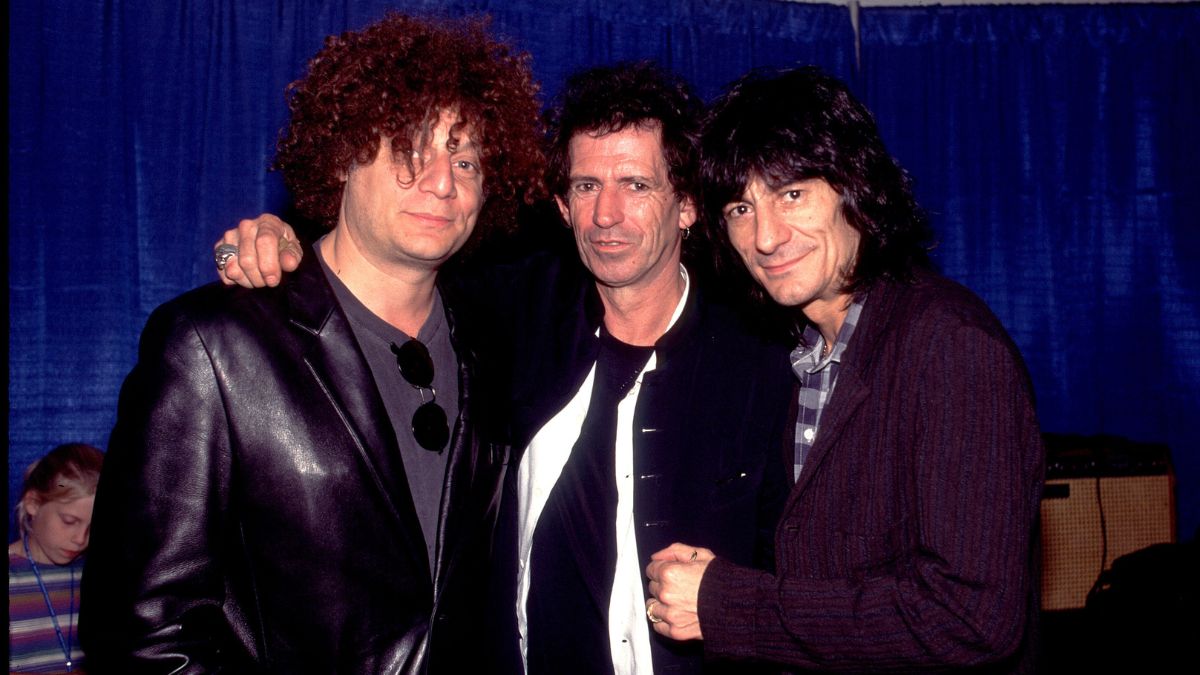The Blissful-Sounding Major Add-2 Arpeggio
An introduction to minor add2’s blissful, optimistic sibling, the major add-2 arpeggio.

Last month, we explored the somber-sounding minor add-2 arpeggio, also known as minor add-9, which is simply a minor triad arpeggio with a second, or ninth, added on top or sandwiched between the root and the minor, or “flatted,” third, resulting in a four-note entity, spelled 1 2 b3 5.
Using the theory-friendly key of A minor to demonstrate, I offered more than a dozen different two-octave fretboard patterns and fingerings for an Am(add2) arpeggio (A B C E), giving you plenty of options for playing it all over the neck.
I’d now like to introduce you to minor add2’s blissful, optimistic sibling, major add-2 (alternatively analyzed as major add-9), which is based on a major triad and spelled 1 2 3 5. To convert minor add-2 to major add-2, simply “un-flat” the minor third, making it major.
For example, FIGURE 1 depicts both an Am(add2) and an Aadd2 arpeggio (A B C# E) in open position, plus a couple of voicings of each arpeggio’s corresponding chord, configured as either an add2 or an add9.
Just as we had done with the first Am(add2) arpeggio pattern I showed you last month, FIGURE 2 shows an Aadd2 arpeggio played in two octaves across all six strings in sixth position, again skipping over the B string for the sake of avoiding an index-finger barre. The only difference here is we’ve changed each C note to C#, one fret higher, resulting in a slight fingering alteration in each octave.
FIGURE 3 illustrates just about every remaining fixed-position shape for playing an Aadd2 arpeggio across two octaves, all of which are again very similar to their Am(add2) counterparts that I showed you in the previous lesson. In each pattern, I’ve converted the minor add-2 shape to major add-2 by substituting C# for every C natural.
FIGURE 4 presents several extended-range Aadd2 patterns that have you traveling diagonally up and across the neck, from low to high, using four-note “modules,” or “cells” that are transposed to higher octaves via quick position shifts. As with the extended Am(add2) patterns I showed you in the previous lesson, practice each of these Aadd2 forms both ascending and descending and ultimately in a smoothly flowing rhythm, striving for a seamless note flow and making the position shifts sound unnoticeable.
All the latest guitar news, interviews, lessons, reviews, deals and more, direct to your inbox!
An effective repetition drill that will help you quickly memorize any of these shapes aurally, visually and muscularly/neurologically is to run through a given pattern four times, alternating between the Aadd2 and Am(add2) forms (each played twice). Experiment with various fingering options and combinations of picked downstrokes and upstrokes, as well as hammer-ons, pull-offs and, with some of the extended diagonal patterns, legato finger slides.
Try to identify and isolate any finger- or pick-friendly one-octave “shred cells” that reside within a longer pattern and loop small groups of notes into a repeating speed lick, played as either triplets or 16th notes, that you can incorporate into your own soloing vocabulary and use to add color and depth to a major or minor tonality. Next time, I’ll show you some more cool things you can do with both major and minor add-2 arpeggios.

Over the past 30 years, Jimmy Brown has built a reputation as one of the world's finest music educators, through his work as a transcriber and Senior Music Editor for Guitar World magazine and Lessons Editor for its sister publication, Guitar Player. In addition to these roles, Jimmy is also a busy working musician, performing regularly in the greater New York City area. Jimmy earned a Bachelor of Music degree in Jazz Studies and Performance and Music Management from William Paterson University in 1989. He is also an experienced private guitar teacher and an accomplished writer.

